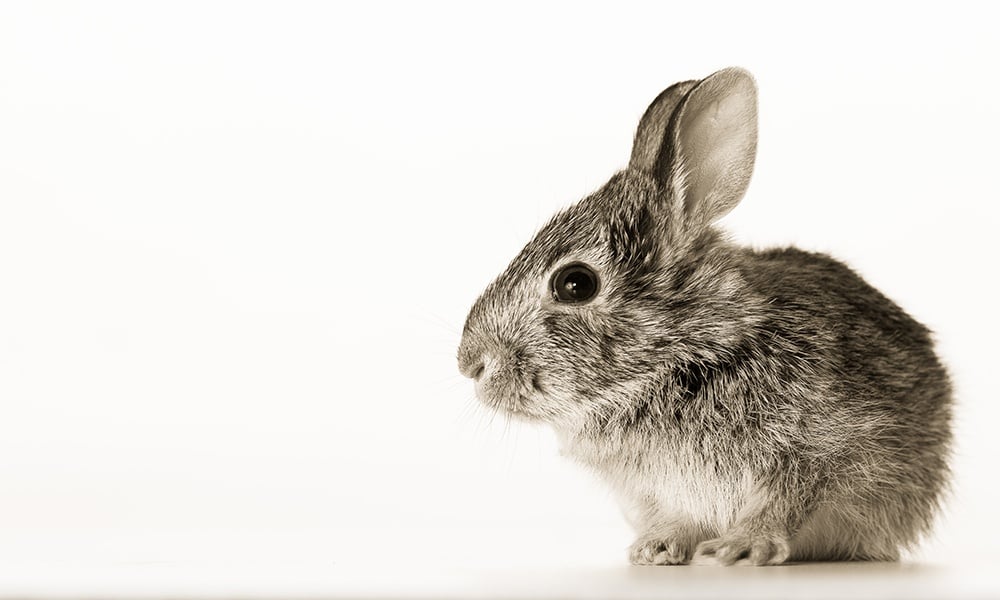
Spring is in full swing here at Willowbrook Wildlife Center in Glen Ellyn. Animals become much more active this time of year, so we tend to see a lot more animals brought to our facility.
Specifically, we start getting in lots of baby animals. Babies are very high maintenance because they require multiple feedings throughout the day, with specific diets for each species. There is plenty of information to help you decide whether the baby animal you find needs help. A lot of animals care for their young in different ways, so it’s best to identify the species and determine if help is needed based on their individual circumstances.
We see lots of Eastern cottontails this time of year. They tend to nest in shallow areas with low vegetation, which makes your backyard the perfect nest site. Cottontail parents will leave their young alone for most of the day, only coming back for feedings. By the time they are 4 – 5 weeks old, these tiny babies are completely independent of mom.

Cottontail rabbits huddle in a shallow nest.
If you find a cottontail nest, it doesn’t necessarily mean they need your help. First determine if they are really abandoned or if mom is still nearby. First try leaving the babies alone; you don’t need to pick them up to evaluate their health right away. A simple touch will tell you if body temperature is warm. They tend to be a little squirmy if healthy too. You can also check their stomachs to determine if they have a tummy full of milk. If they are warm, squirmy, and have full tummies, mom is taking great care of them and they should be left alone.
If it’s hard to determine these things, monitor the nest from a distance to see if mom comes back. Remember, if you or your pet hang around the nest, mom will not come back, so try not to be too close.
If you suspect animals are abandoned or injured in some way, place them in a shoebox or pet carrier and cover it with a towel before transporting them to Willowbrook. Cottontails are a very high-stress animal, so the less you handle and look at them the better. We also do not recommend feeding them.

Cottontails will be on their own at the age of 4 or 5 weeks.
Willowbrook is able to care for cottontails and their specific needs, but we can only care for so many at a time. For this reason, we do set capacity limits when needed throughout the season. When baby cottontails are brought to our facility, they are immediately evaluated to ensure they are old enough to be adequately cared for and there is enough space at Willowbrook to properly care for them. If they do not meet these requirements, you are welcome to find another nearby wildlife rehabber or we can accept them for humane euthanasia.
Willowbrook strives to provide helpful information on living with wildlife in DuPage County. We have an educated staff that is always willing to help in any situation, and our phone line is available 24/7 with information for many common wildlife situations. Call Willowbrook at 630-942-6200 with questions and to check if we have reached capacity before coming in. We could not do what we do without the dedication of the public and your willingness to help these animals when needed. So, if you run across baby cottontails this spring, evaluate their health and determine if rescue is needed.
Links to helpful information:
Baby Cottontail Rescue Advice
Native Wildlife Rescue Advice
Living with Wildlife
